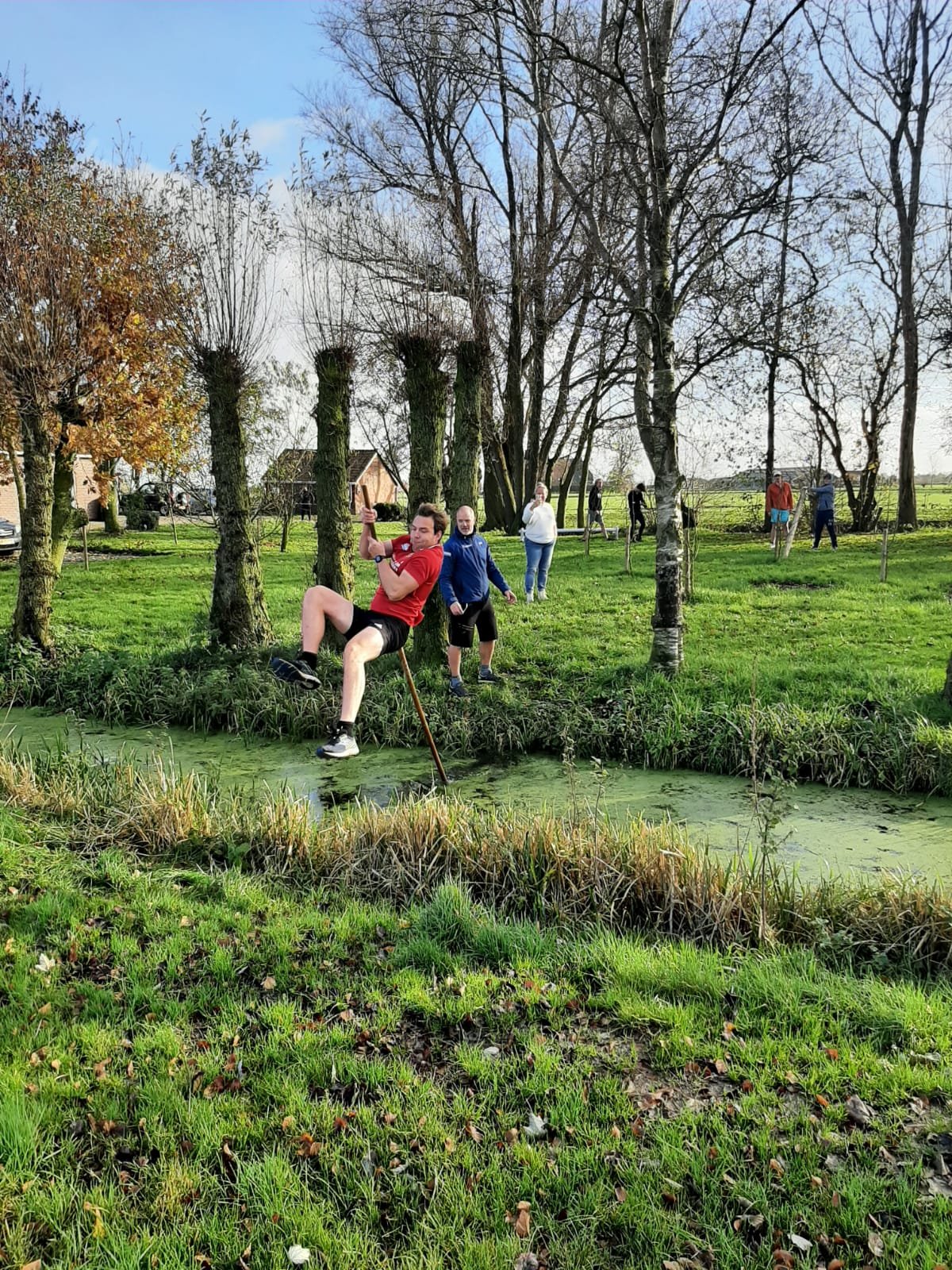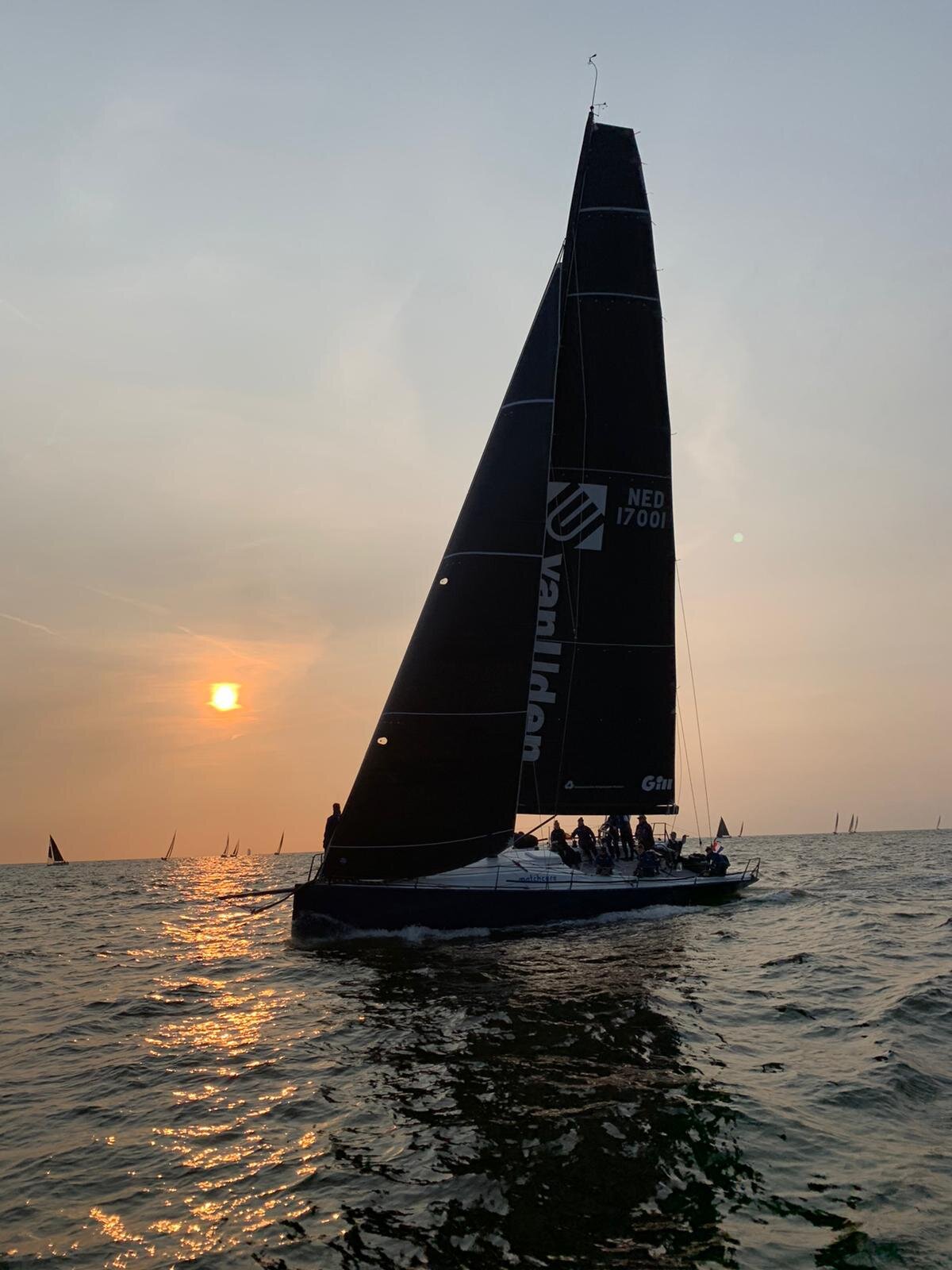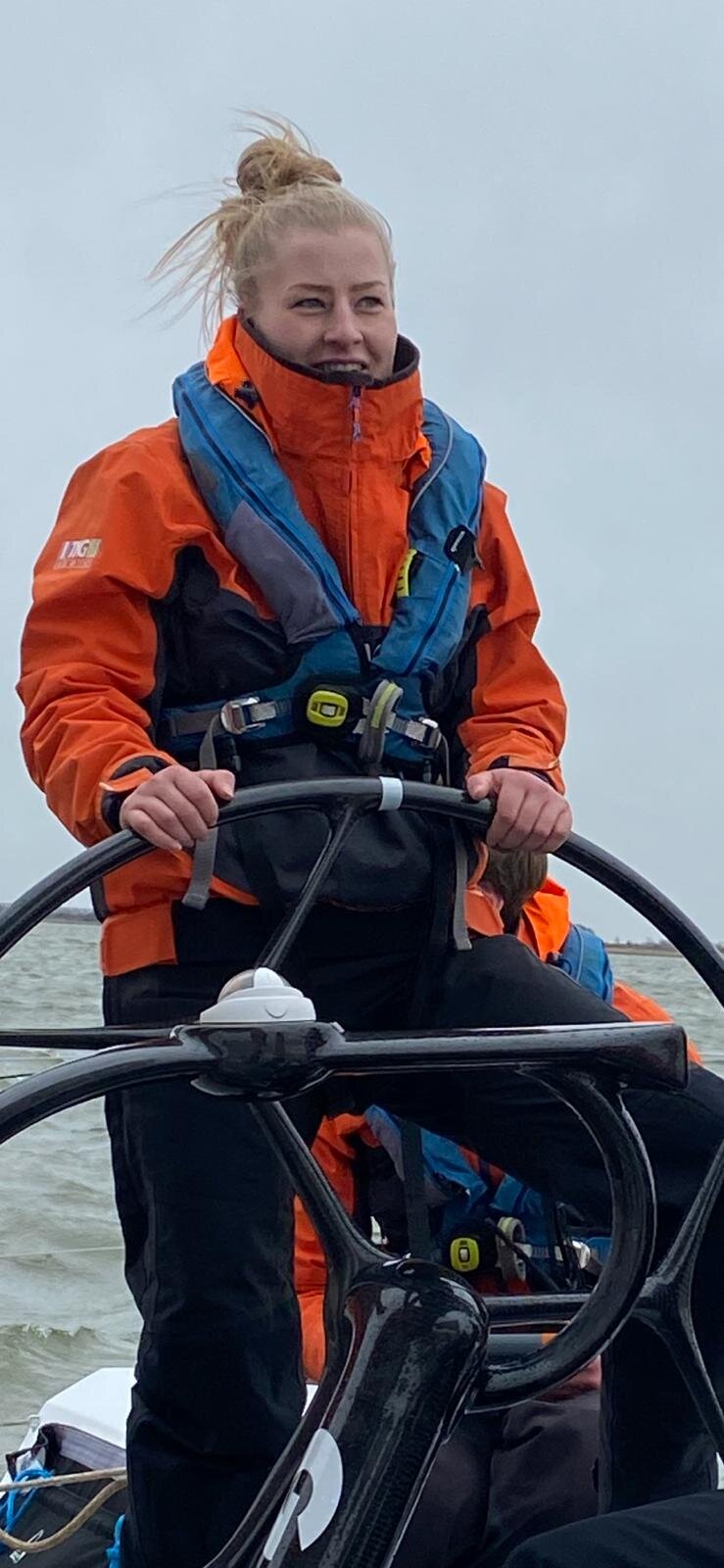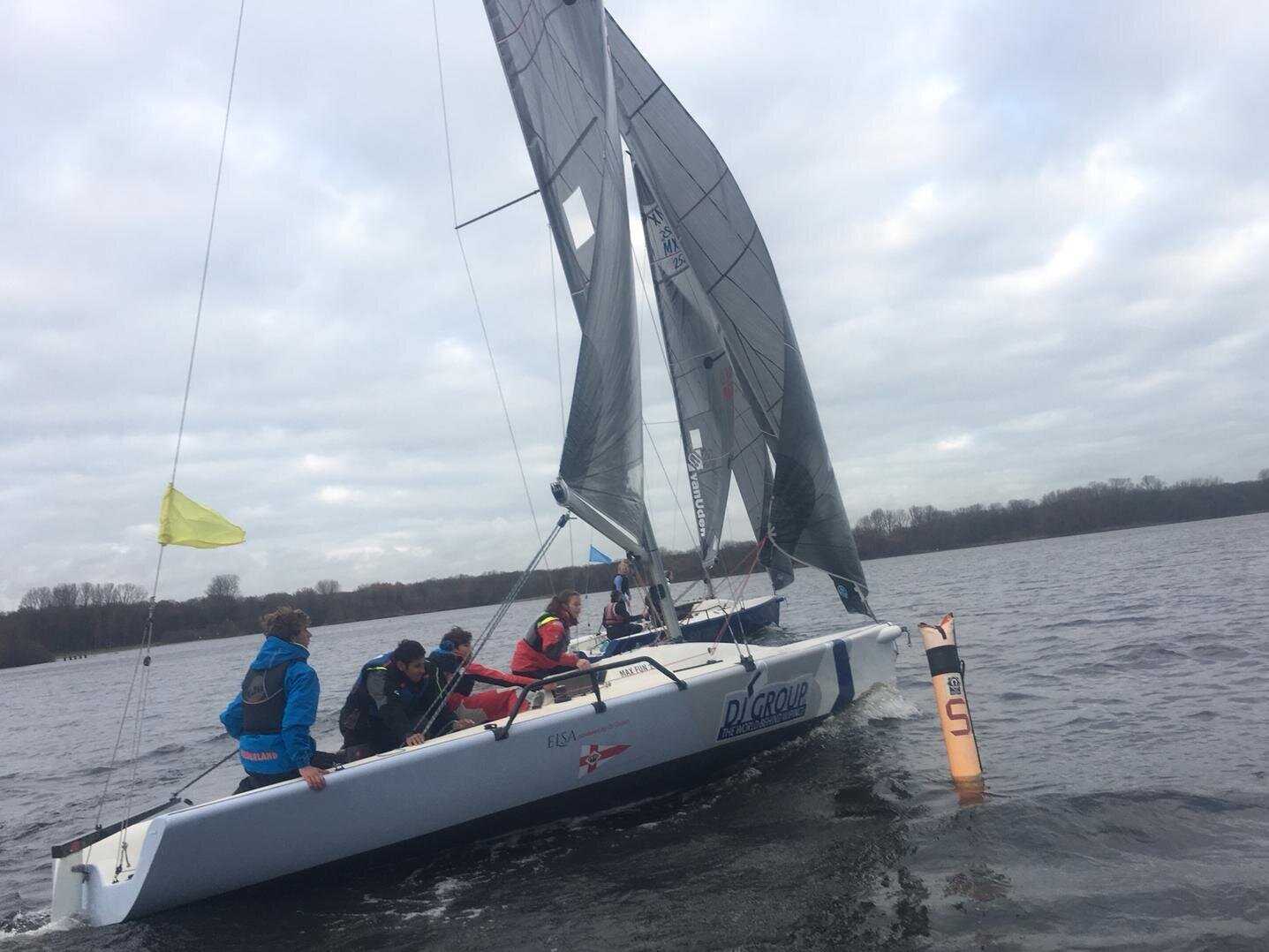Up and down the English Channel
Laurien
Last spring, the final season of the ROST II program kicked off. In the previous article we looked at the events and planning for the upcoming season. At this time the first races have been sailed and there are results on the board. Time to give an update on the road to the European Championship for the Van Uden Ker46.
For the first event, the RORC Easter Challenge, the boat was sailed to the Solent in the south of England. This was the first time of the season but certainly not the last time the van Uden Ker46 crossed the Channel. Half of the team took the team bus via the car train from France to England, then took the ferry to Cowes, while the other half were delivering the boat. Fortunately, the weather was exceptionally warm and calm for April, so with no wind and the engine on, the other side was easily reached. After the crew was reunited, the boat was prepared for the races on the Solent. The RORC Easter Challenge is a unique event and very helpful at the start of the season as coaches were provided on the water. This is almost never the case with larger boats and for the whole of ROST II it was the first time that the coach was not only present on board in the form of Gerd-Jan Poortman, but also with a coach in a dinghy surrounding the boat.
Full action at the bottom mark during the RORC Easter Challenge
The concept of this event was already conceived a few years ago, but due to Covid-19 it was only until this year that the event was held. The coaches, Andrew Palfrey (Professional Sailing Coach), Jermy Smart of North Sails and Tim Thubron of the RORC drove drones and cameras around the marks and behind the boats to get a good image of the trim. At the end of each day, the footage was reviewed with the entire fleet at the Royal Ocean Racing Clubhouse in Cowes. On the images at the marks, the maneuvers were clearly visible, and it was a very easy to compare different boats. Small things such as crew members who are out of the rail too early clearly visible on these images. With bigger mistakes, such as an incorrect hoist, it was easy to see where the mistake started. For the bowmen (Finn Kribbe and Bouwe van der Weijden) and the pit (Pieter Henken and Laurien Waller) of the team, these were the images that were most learned from, but off course we tried to make as less mistakes as possible. You learn a lot from seeing a wrong set, but of course we prefer to sail flawlessly. For the trimmers (Ole van der Vorm, Floris Lampe, Max Wilmink and Shivam Ramdas), the images of the different trim settings on the boats were interesting. It is very easy to see the shape and setting of the jib compared to the mainsail from behind. The images gave the trimmers the chance to compare their own set up with those on other boats. As a result, there was a clear increase in upwind boatspeed as the event progressed. The tactician and navigator (Lars van Stekelenborg and Stan Schouten) were in turn able to make good use of the images at the start. While most boats were still well below the line at the first starts, we were bang on the line at the gun on the last day. Overall, this growth resulted in second place for ROST II, only beaten by the GP42 Dark 'n Stormy, a semi-professional team with tactician Ian Walker (Volvo Ocean Race winner). It was a great with medium to light winds, clear skies and pretty warm temperatures for this time of the year. All in all, a great start to the season in which we learned a lot.
Trim and setup analysis during the RORC Easter Challenge
The Van Uden Ker46 during the Van Uden Reco Regatta on the Haringvliet
After the RORC Easter Challenge, the boat was sailed back across the Channel for the home event of the boat: the Van Uden Reco in Stellendam. This event is an excellent opportunity for ROST to train maneuverability, because the water at Stellendam is relatively small and therefore the up- and downwind legs are short. It is therefore a difficult match to win, because in races lasting only 45 minutes, at least 12 minutes must be won at number two to beat them on rating. Because the legs are relatively small for the Ker46 and the wind was blowing strong, at 20 knots during the entire event, it is hectic and sometimes stressful for the team. However, after two days of sailing, we were in 1st in IRC 1 and 2nd in ORC 1, which we were very satisfied with. Unfortunately, the Ker46 was unable to sail on the last day because of a damage to the boat. Still, everyone from the team was able to join other boats, such as a Dehler36, an X-43 and three of the team helped the race committee on the starting ship. In the end, no prize could be taken home, but fortunately the season is not over yet.
The Ker46 had been in Dutch waters long enough again, so we set up for the next crossing to England. It was time for the Vuurschepenrace and we were joined by a special guest; Koen Lockefeer from Eclectic, one of the ROST partners. The 113 nm race to Harwich started in the evening a couple of hours before sunset in Scheveningen with a short upwind leg to an inflatable mark. After rounding the topmark, we hoisted the gennaker for a short 45 minutes downwind leg, north along the coast. After this the crossing to Harwich really started. From that moment on we only sailed VMG upwind to the finish without too many maneuvers. Besides a couple of tacks, our tactical options were limited by the angle of the wind and a Traffic Separation Sceme (TSS). We had a bit of bad luck with the wind as the smaller boats behind us got a more favored wind shift a couple of hours behind us. Due to this wind shift, we were only able to achieve the line honors, despite the correct tactical choices and the hard sailing. After just over twenty hours of sailing, the finish was at the harbor entrance of Harwich with gusts of 30 knots. The team then sailed on to Ipswich, where we enjoyed the traditional Pinn Mill lunch at the legendary Butt & Oyster restaurant the day after the finish. The rest of the time was used getting the boat fully ready for the North Sea Race two days later.
The Van Uden Ker46 just after the start of the Vuurschepen
The North Sea Race is the race from Harwich back to the Netherlands. The IRC1/ORC1 starting group was filled up by a couple English yachts, including the faster and bigger CF520 Oystercatcher XXXV which provided close racing at the start and a boat on the horizon to try and overtake. It was unclear for a long time how the weather would develop for this race. A transition patch was forecasted in which we didn’t really know what the wind was going to do. It turned out to be a difficult section in which the wind turned 720° degrees since the start in the afternoon. The team made it through these transitions quite quickly and we were much closer to the Oyster catcher then we would normally be. From the Smith’s Knoll mark, it was still 60nm downwind towards IJmuiden. We hoisted the kite at 1am in the pitch-black dark. With 25 knots of wind on our tail and nice waves to surf on it was gift for every sailing enthusiast and specifically for teammate Max's birthday. We finished at 9am just of the coast of Scheveningen. Tired but happy with the race, the cleaned the boat and went home for a good sleep. On Sunday afternoon the price giving ceremony was held at the Scheveningen Yacht club. We received prices for 1st IRC 0, 1st ORC 1, 3rd ORC overall and 2 IRC overall. A successful crossing of the Channel!
The North Sea Regatta traditionally starts with two offshore races to conclude one week later with inshore races. We are fully ready to have a great ending to this event. If we continue the upward trend, great titles can still be won here. After the NSR, you guessed it, the team will cross the Channel again for the UK Nationals and the Round the Isle race. Keep an eye on the website and social media channeld for an update on the results!
Laurien Waller

























